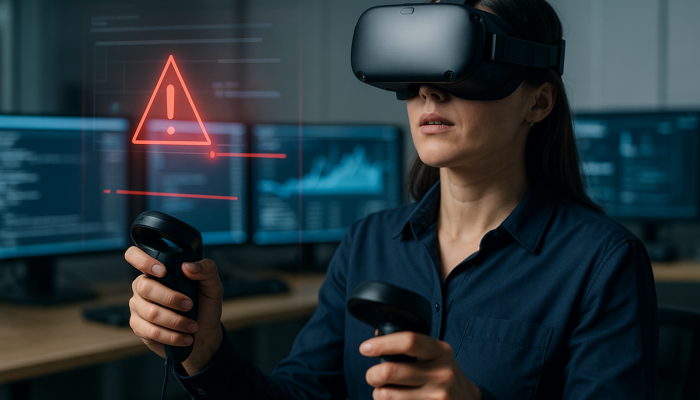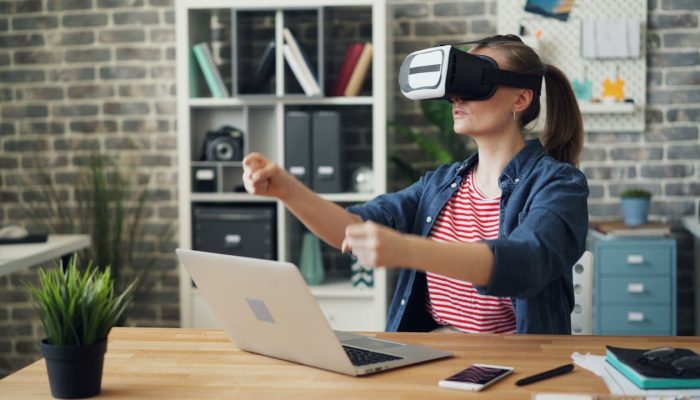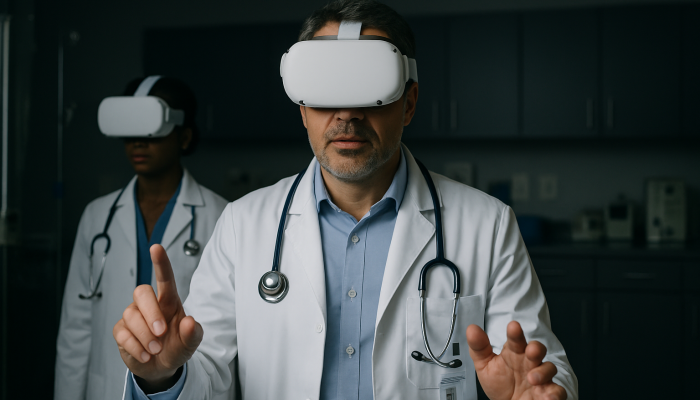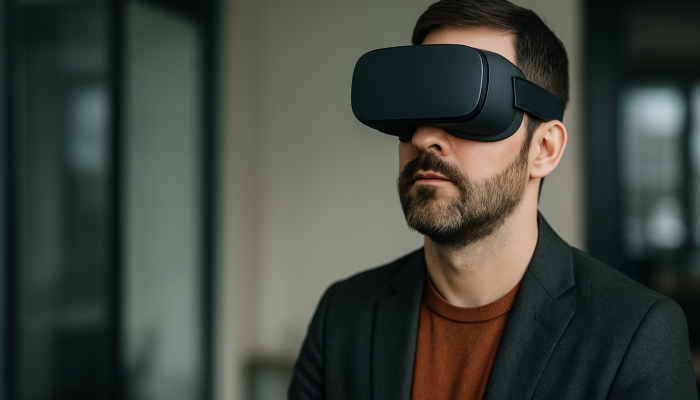As a QA tester who has spent hundreds of hours inside headsets, I can tell you this: VR quality isn’t only measured in FPS counters and crash logs. It’s measured in how natural, comfortable, and believable the world feels when you’re in it.
In traditional software testing, you can spot UI misalignments or button glitches with a screenshot. In VR, the same kind of tiny flaw can throw a player off balance, make them nauseous, or completely break the sense of presence. That’s why VR, XR, and MR testing demands a unique mindset — one that blends technical precision with human empathy for how the experience feels
The Unique Nature of VR Bugs

If you’ve tested mobile apps, console games, or enterprise software, you already know how to spot functional issues. But in VR, bugs take on a whole new dimension — literally.
Here are some categories of VR bugs that are particularly immersion-breaking :
Spatial Interaction Bugs
In VR, your hands, head, and body movements are part of the input. That means collider boundaries, hand tracking accuracy, and gesture recognition need to be flawless.
- Collider issues :
- Imagine trying to grab a virtual wrench, but your hand “passes through” it because the hitbox is too small. Or worse — the collider is oversized, and you “grab” it without actually touching it.
- Imagine trying to grab a virtual wrench, but your hand “passes through” it because the hitbox is too small. Or worse — the collider is oversized, and you “grab” it without actually touching it.
- Hand tracking errors :
- In AR/XR training apps, a worker might try to “push” a virtual button, but their finger registers a few centimeters away from where they intended.
- Input delay :
- Even a 200 ms delay between hand movement and visual response can make interactions feel robotic and unnatural.
Positional Drift & Tracking Instability
This is a bug category that doesn’t exist in flat-screen games. When headset tracking drifts, even slightly, the user’s virtual position can slowly slide away from their real-world position. Over time, that can cause disorientation — or even collisions with real-world objects.
- Example from industrial VR training :
- I once tested a forklift simulation where, after 10 minutes, the trainee’s position in VR had shifted enough that their “virtual forklift” was overlapping with the control console. Totally broke the realism.
- I once tested a forklift simulation where, after 10 minutes, the trainee’s position in VR had shifted enough that their “virtual forklift” was overlapping with the control console. Totally broke the realism.
Misaligned or Floating UI Elements
Flat-screen developers know all about UI placement — but in VR, the UI exists in 3D space. That means :
- A floating menu might accidentally appear “behind” another object, making it unusable.
- Text can be too close to the user’s eyes, causing eye strain.
- In MR applications, UI elements can drift away from their intended real-world anchor point.
Motion-Induced Discomfort
Perhaps the most infamous VR-specific bug class — these are the ones that make users sick.
- Frame rate instability:
- Inconsistent performance is more than just annoying — it triggers motion sickness for many people.
- Unnatural camera movements :
- If the virtual camera moves in ways that don’t match your real-world head movement, your brain instantly protests.
- If the virtual camera moves in ways that don’t match your real-world head movement, your brain instantly protests.
- Poorly tuned locomotion systems :
- Jump cuts, sudden accelerations, or mismatched walking speeds can all induce nausea.
- Jump cuts, sudden accelerations, or mismatched walking speeds can all induce nausea.
Why These Bugs Slip Past Traditional QA
Most of these bugs won’t appear in logs. You can have a “bug-free” console log and still deliver a VR experience that makes users dizzy, frustrated, or disengaged. Why?
Because VR QA isn’t just about whether something works — it’s about how it feels.
A traditional QA tester might check if the “grab object” function works. In VR, we also ask :
- Does it feel like my real hand grabbed it?
- Is the weight simulated properly?
- Is the audio feedback believable?
- Does the object stay in the right position relative to my hand?
Real-World Scenarios — Testing VR Across
Industrial Sector
In VR safety training for factory workers, you might have scenarios where a worker must operate heavy machinery virtually. If the controls lag, are misaligned, or behave unexpectedly, not only does it hurt immersion — it could lead to bad habits that carry over into the real world.
Healthcare Sector
VR surgery simulations are extremely sensitive to precision. A tracking bug that moves a scalpel by just 2 mm can completely invalidate the training scenario. That’s why healthcare VR QA involves testing with real doctors to ensure realism matches medical accuracy.
Gaming Sector
In VR games, “fun” depends on immersion. Bugs like jittery weapon tracking, teleportation errors, or physics glitches can turn excitement into frustration instantly.
How Expert QA Teams Catch VR Bugs
- Physical headset testing:
- No emulator can replicate the exact feel of VR motion and tracking.
- No emulator can replicate the exact feel of VR motion and tracking.
- Cross-environment checks :
- Testing in different lighting, room setups, and play spaces.
- Testing in different lighting, room setups, and play spaces.
- User behavior simulations:
- Reproducing both intended and unintended player actions to see how the system responds.
- Reproducing both intended and unintended player actions to see how the system responds.
- Multi-device testing:
- Ensuring consistent performance across various VR headsets, AR glasses, and MR devices.
- Ensuring consistent performance across various VR headsets, AR glasses, and MR devices.
Try Our 2-Week Free Trial
Want to see how we test before you commit?
Start with our 2-week free trial, and get :
- Real-device performance reports
- Bug logs with video proof
- Comfort and battery feedback
- Optimization tips for your dev team
Contact Us
Fill out the form below and we will
contact you as soon as possible!



